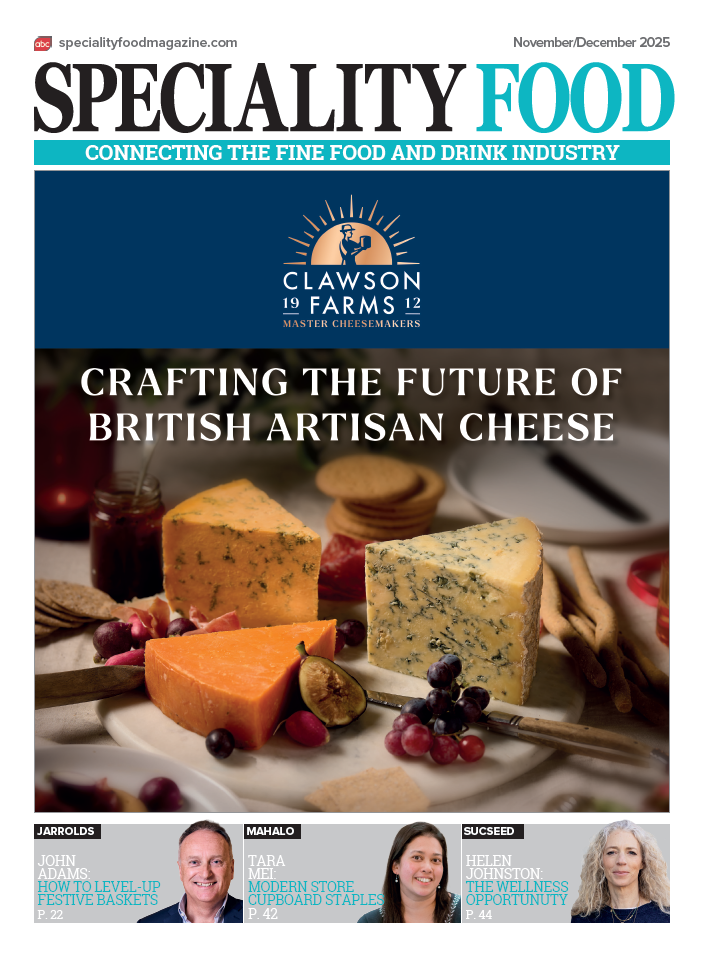“Tell it as it is”

- How one cheese shop supported locals in lockdown
- Rory Mellis, IJ Mellis: “Local businesses have a chance to flourish”
- Why we should be proud of the cheese industry’s response to Covid
- The joy of cheese grading
- “Keeping the faith”
When you write a book about cheese and have to come up with unique and interesting descriptions for over 750, you quickly come to realise that the English language is extremely thin on the ground for words to describe cheese and even thinner for words to describe creaminess, the nuances of texture, the cheesy taste of a Cheddar or the milky taste of milk!
I therefore have no sympathy for retailers, or cheesemakers, who offer dull, lacklustre descriptions and justify it by telling me how difficult it is to come up with descriptions when they offer less than 100 cheeses. They have obviously failed to realise that the labels are not there as decoration or simply to tell people the price and name of the cheese. They are there, day in, day out, as your customers’ first contact with your counter. They therefore need to sell the product to your customers, to persuade them to try something new, and to inspire them to step outside their comfort zone and try something different. Plus, the customer sees them as the voice of the owner and the passion for the things they sell.
Wine shops do this extremely well with cheerful, witty – and yes sometimes banal – comments, but they make us laugh, groan, think and eventually buy one of them. Cheese labels rarely have that effect.
Imagine if beer makers said their delicious amber liquid was ‘mould ripened’ – a term frequently used by cheesemakers and retailers to explain that the moulds on the outside of a cheese help ripen it, but for a cheese novice it is a definite negative. A bit like wine makers talking about malolactic fermentation; you rarely see it on a label. If people want that sort of detail they will Google it – they don’t need it shouted out from the label.
It is not, however, as bad as using the description ‘smear ripened’: a term that describes how a cheesemaker rubs or smears the rind of his lovely washed rind cheese with brevi-bacterium and brine to create those gorgeous, outspoken, bright orange-rinded cheeses with their farmyard aromas. Much to the horror of their parents, the children who used to come into my shop in London would say “it smells like poo, mummy!” Still, it was true.
And tell me, dear cheesemaker, what is the advantage of calling a cheese full-fat? Probably 95% of all cheeses are made with full fat milk, i.e. the milk hasn’t had the cream skimmed off the top. So why tell people, especially as around 60% think milk has a fat content of about 20% and cheese is around 60% or even 70% fat.
Now, I am sure all three of you reading this column know the fat content, but just in case… Cows’ milk has a fat content of around 3.8%, goat about 3.5% and ewe around 7%, but when you make cheese from any of these milks it works out to be around the same – soft whites like Brie, 24-28%, and hard, 33-36%. A very reasonable amount, considering the rest is made up of very nutritious calcium, vitamins and water. So personally, I would start raving about how low-fat cheese is compared with, say, mayonnaise (79%) or peanuts (54%).
But if you are determined to put someone new to cheese off buying it, as well as telling them it’s a mould-ripened, full-fat cheese, make sure you or the cheesemaker adds to their concern and use a use by date instead of a best by date on your cheese. I doubt I have heeded the use by date of any cheese in my fridge for years, and mould growth is something I take to mean the cheese is still alive and well and waiting patiently for me to taste it.
Then there are the numerous categories of cheese that only make sense to a cheesemaker, like ‘cooked’ cheese, ‘pressed uncooked’ cheese, semi-hard, semi-soft or wash curd cheese. Instead of these, we need a system based on what you can see – the rind – which is determined by its moisture content. So you can judge a cheese by its cover!
more from Cheese Talk
-
“Don’t sway to populists”
25 August 2016 Cheese TalkWith consumer demands continually fluctuating and markets changing on a yearly basis, it’s almost impossible to predict what the new craze or sudden ‘loser’ will be. -
“Making a spectacle of yourself”
12 July 2016 Cheese TalkUntil a few weeks ago I was feeling rather smug about my moved to New Zealand, basking in a four month-long near-drought with autumn temperatures rarely falling below 20ºC -
“Cheese magic – it’s in our culture”
17 May 2016 Cheese TalkWe all know that cheese is magic… really. Some milk, some rennet, some starter culture, some salt and maybe sometimes some controlled mould, and hey presto you have thousands of different cheeses

